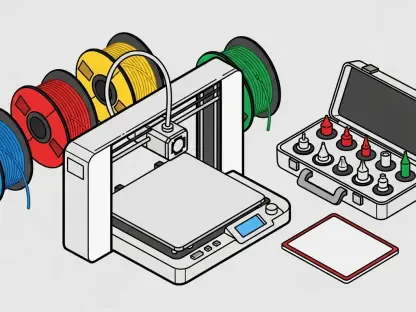In a bold move to reshape trade dynamics, President Donald Trump initiated a 50-day investigation into imported furniture in July of this year, signaling the possibility of new tariffs under his long-standing “America First” agenda. Supported by Executive Order 14298, this policy targets major exporters like China and Vietnam, which contributed a staggering $12 billion to U.S. imports last year, aiming to address what the administration deems unfair trade practices through reciprocal measures. This decision has sparked intense discussion across the furniture sector, creating a divide between domestic manufacturers who may thrive under protectionist policies and businesses reliant on global supply chains that could face severe disruptions. As the investigation unfolds, stakeholders are grappling with questions about market share, consumer pricing, and economic stability. This article explores the potential ramifications of these tariffs, delving into who stands to gain, who might struggle, and the broader implications for an industry already navigating turbulent waters.
Revitalizing Domestic Production
The proposed tariffs are positioned as a lifeline for U.S. furniture manufacturers, particularly in states with deep-rooted industry ties such as North Carolina, South Carolina, and Michigan. These regions, once hubs of production, have faced stiff competition from lower-cost imports over the decades, resulting in factory closures and job losses. Companies like La-Z-Boy, which produces over 70% of its furniture domestically, could see a significant boost if imported goods become less price-competitive due to added duties. A recent $150 million expansion of a plant in North Carolina by La-Z-Boy demonstrates alignment with the administration’s push for reshoring, potentially positioning such firms to capture a larger slice of the market. If tariffs are imposed, the reduced pressure from overseas competitors might encourage further investments in local facilities, reviving communities that have long depended on manufacturing for economic vitality and offering a chance to reclaim a competitive edge.
Beyond immediate market gains, domestic producers may also benefit from government incentives hinted at by the administration, such as tax credits for companies that prioritize U.S.-based production. This could lower operational costs and make scaling up more feasible for firms ready to invest in American labor and infrastructure. However, the ability to meet increased demand without significant delays or cost hikes remains a critical concern, as the industry must navigate a tight labor market and potential supply bottlenecks for raw materials. While the short-term outlook appears promising for companies rooted in the U.S., success depends on whether these manufacturers can adapt swiftly to capitalize on the changing trade landscape. The historical significance of furniture-making in certain states adds a layer of optimism, as local governments and communities may rally behind efforts to support this resurgence, potentially creating a ripple effect of economic growth in these areas.
Struggles for Import-Dependent Companies
On the opposite end of the spectrum, businesses that rely heavily on imported furniture face daunting challenges under the looming threat of tariffs. Companies like Wayfair, which sources 80-90% of its products from overseas, could see costs skyrocket if duties speculated to be between 20-30% are implemented, adding hundreds of dollars to items like mid-range sofas. Such increases might force tough choices between absorbing the extra expenses, which would erode profit margins, or passing them on to consumers, risking a loss of price-sensitive customers. The immediate market reaction, evidenced by a 12% drop in Wayfair’s stock following the policy announcement, reflects deep investor unease about the sustainability of a business model built on low-cost imports. As supply chain disruptions become a real possibility, these firms must contend with operational headaches that could further strain their bottom lines.
Adding to the complexity, import-reliant companies face the specter of retaliatory trade actions from countries targeted by the tariffs, such as China, which could impose countermeasures affecting other U.S. sectors. This creates a domino effect, where the furniture industry’s struggles might spill over into broader economic tensions, complicating recovery efforts. For businesses like Wayfair, adapting may require diversifying supply chains to less-targeted regions, a process that demands time, capital, and strategic foresight. Even then, consumer pushback against inevitable price hikes could dampen sales in a market already sensitive to economic pressures. The stark contrast between domestic and import-dependent firms highlights the uneven impact of protectionist policies, raising questions about whether these companies can pivot effectively or if they will bear the brunt of a policy aimed at leveling the playing field for American producers.
Economic Pressures and Market Dynamics
The broader economic context adds another layer of uncertainty to the tariff debate, as the U.S. furniture industry is already grappling with significant headwinds. A sluggish housing market, coupled with persistent inflationary pressures, has led to a 4% year-over-year revenue decline for the sector this year, signaling weakened consumer demand. Introducing tariffs risks exacerbating this trend by driving up prices at a time when buyers are already tightening their belts, potentially deepening the industry’s downturn. While domestic manufacturers might step in to fill gaps left by pricier imports, scaling production to meet national demand without inflating costs remains a formidable challenge. The delicate balance between protecting local jobs and maintaining affordability for consumers lies at the heart of the policy’s economic implications, with no easy answers in sight.
Moreover, the ripple effects of higher furniture prices could influence related sectors, such as home improvement and real estate, where affordability plays a key role in consumer decision-making. The administration’s proposed incentives for domestic production might offer some relief by offsetting costs for manufacturers who invest in U.S. operations, but their impact hinges on timely implementation and sufficient funding. If domestic firms struggle to ramp up output or if labor costs surge, the anticipated benefits of tariffs could be undermined, leaving the market in a precarious position. The intersection of trade policy with existing economic challenges underscores the complexity of revitalizing an industry through protectionism, as short-term gains must be weighed against the potential for long-term consumer alienation and market contraction.
Balancing Short-Term Wins and Future Risks
If tariffs come into effect, domestic manufacturers could experience an immediate advantage as the price gap with imported furniture narrows, creating opportunities to expand market share and boost profitability. This short-term win aligns with the administration’s goal of strengthening U.S. production, potentially reinvigorating regions that have long suffered from deindustrialization. However, the path forward is fraught with uncertainties, as consumer behavior remains unpredictable in the face of rising costs. Should buyers opt for fewer purchases or shift to alternative products, even domestic firms might feel the pinch despite their initial edge. The success of this policy in delivering lasting benefits depends on whether the industry can sustain momentum without alienating its customer base or triggering unintended economic fallout.
Looking further ahead, global trade dynamics introduce additional risks that could undermine the tariff strategy. Retaliatory measures from major exporters might escalate tensions, impacting not just furniture but other U.S. industries reliant on international markets. Additionally, the capacity of domestic producers to scale efficiently is not guaranteed, as infrastructure and workforce limitations could hinder rapid growth. The long-term outlook remains a gamble, with outcomes tied to how well the U.S. navigates trade relations and whether manufacturers can meet demand without significant disruptions. This delicate interplay of immediate opportunities and future challenges paints a picture of a policy with high stakes, where the promise of revitalized manufacturing must be tempered by the realities of a complex global economy.
Navigating Investment and Strategic Choices
From an investment perspective, the tariff initiative presents a landscape of both opportunity and caution for those eyeing the furniture sector. Domestic manufacturers like La-Z-Boy and Ethan Allen appear poised for gains, as reduced import competition could drive revenue growth and improve market positioning. Yet, investors must remain mindful of risks such as rising operational costs and the volatility of trade policies, which could shift with little notice. The potential for government support through incentives adds an appealing layer, but the timeline and scope of such measures remain unclear, injecting further uncertainty into investment decisions. Balancing the allure of short-term upside with the need for long-term stability is critical for those looking to capitalize on this evolving situation.
For import-dependent firms like Wayfair, strategic pivots become essential to weathering the storm of potential tariffs. Options such as diversifying supply chains to countries less likely to face duties, like Mexico or parts of Eastern Europe, offer a possible lifeline, though they come with significant logistical and financial hurdles. Alternatively, absorbing some costs to maintain competitive pricing might preserve customer loyalty, but it risks straining cash flow in an already challenging market. Investors and company leaders alike must grapple with these trade-offs, recognizing that adaptation carries no guarantees of success. The stark divide between domestic and import-reliant businesses underscores the need for a cautious, diversified approach, as the full ramifications of this trade policy continue to unfold in an unpredictable economic environment.
Reflecting on Industry Implications
Looking back, the announcement of a tariff investigation into imported furniture marked a pivotal moment for the U.S. industry, revealing the deep fault lines between domestic and global business models. Manufacturers with strong American roots found renewed hope in the promise of reduced competition, while those tied to overseas supply chains confronted the harsh realities of cost pressures and market skepticism. The economic backdrop, already strained by declining demand, amplified the stakes of this protectionist turn, leaving lasting questions about consumer resilience and production scalability. As the dust settled on initial reactions, the path ahead demanded strategic foresight from companies and careful consideration from investors. Moving forward, monitoring global trade responses and the rollout of government incentives will be crucial, alongside efforts to innovate within domestic manufacturing to ensure sustainable growth in a transformed market landscape.









